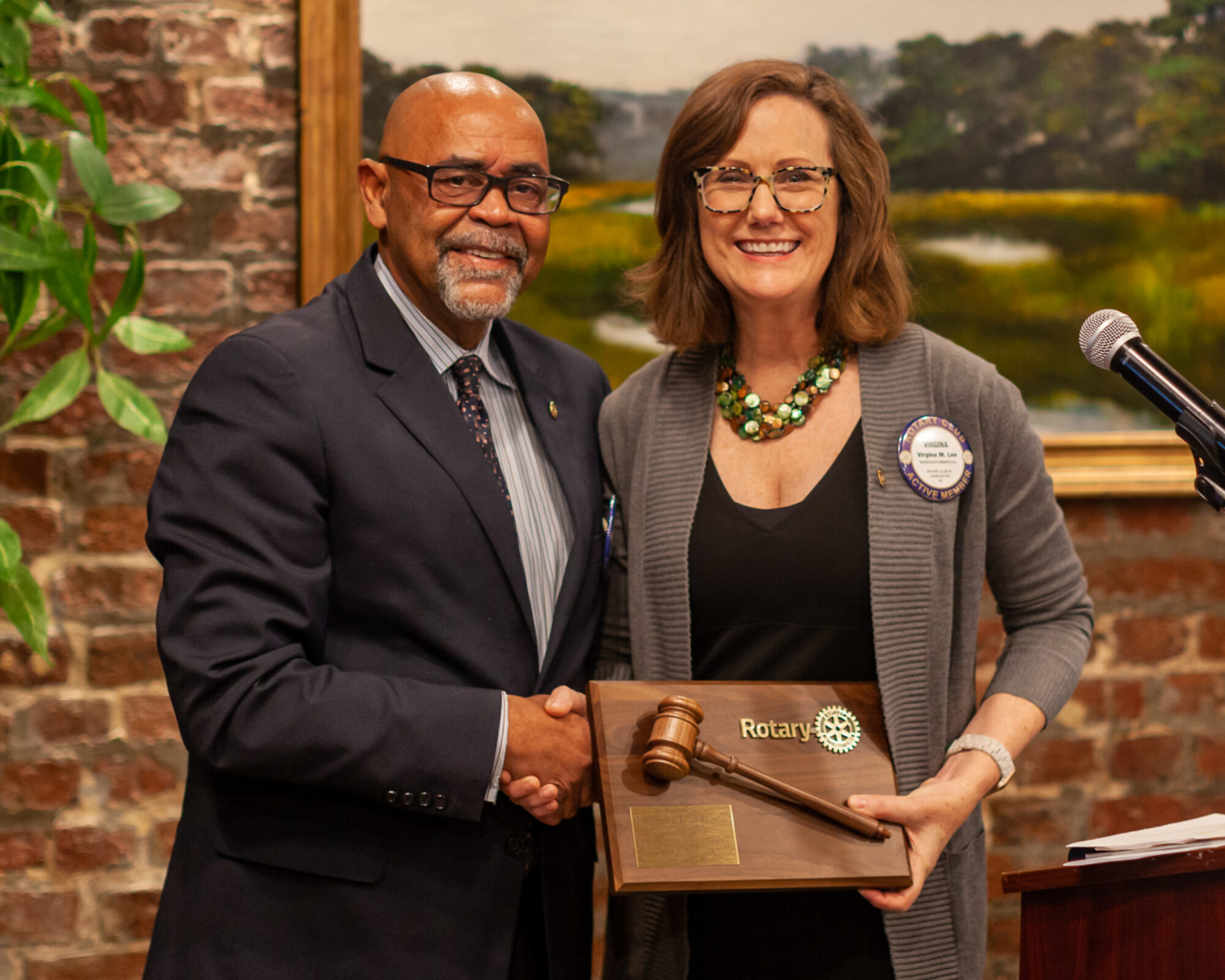Navy Brig & It’s Partnership with Local Non-Profit
February 1, 2011: Rotarian Jim Geffert introduced today’s speaker, Commander Ray Drake, with a childhood anecdote recounting the Commander’s first air show at 12 that provided the inspiration to join the armed forces. Commissioned in May of 1992, Cmdr. Drake’s notable military career is evident in his multiple awards and decorations.
During his successful career and promotion to Commanding Officer, Cmdr. Drake explained that he was given 3 placement choices: recruiting, working at an air field in South America or at the Naval Consolidated Brig in Charleston. The decision was swayed by his father’s advice, as he noted that “corrections is a growth industry!”
Cmdr. Drake gave a comprehensive outline of the Navy Brig, one of the largest military prisons in the country. He explained the most important role of the Brig is “preparing them [the offenders] to be productive citizens,” as 99.9% of them will transition to civilian life upon their release. This crucial “preparation” is successfully executed using a military model and “tight team concept” and results in the Brig’s impressive
In addition to its remarkable low return rate, the Brig’s true success is evident in its flawless, 7 year consecutive 100% accreditation score, a feat no other military prison has achieved. Cmdr. Drake explained the rigorous accreditation process involves more than 531 standards, all of which have to be met in order to receive a 100% score.
The Brig’s impressive “self sustained facility,” including multiple 80 bed housing units and 240 multi-service staff coupled with their “holistic programming aspect” are the success factors that shape productive and educated prisoners. All inmates are required to work and are fortunate to have a myriad of selections, including sail marking, carpentry, signage and automotive. One of the most coveted jobs is the newly integrated dog training program.
Cmdr. Drake facilitated the Brig’s partnership with local non-profit Carolina Canines for Service, Inc. He recognized not only the benefit for the combat-wounded veteran receiving the service dog, but the immeasurable impact the partnership would provide for both the prisoners and Brig facility and staff.
The service dogs, rescued from local Charleston shelters, are x-rayed and tested for temperament. Similarly, the applying prisoners are screened for personality and compatibility. When matched, the service dog and prisoner become 24/7 companions: eating, sleeping and working together. The participating prisoners not only receive viable job/pet training, they are also eligible for continuing education credits at local universities. Cmdr. Drake noted the benefits reach not only the prisoner, but the facility and staff as the presence of the service dogs has “calmed tension levels” and boosted staff morale as many are allowed to take the dogs home with them on the weekends.
This win-win program is an inspiration to all involved, including the local Charleston community. Cmdr. Drake explained that donations such as hotel rooms for the wounded warrior matched with the dogs and local veterinarians’ time and support are “critical” to the program’s success. Throughout his presentation, Cmdr. Drake repeatedly thanked the community and Rotary audience for their support.
At the conclusion of the presentation, the Rotary audience was treated to “Titus, the visiting service dog” and Rick Hairstone, Carolina Canine for Service’s President & CEO, demonstration. Titus successfully showed off his laundry skills, coin retrieving ability and most impressively, his retrieval talents following Rick’s green laser pointer.
Submitted by Teal Van Saun, Keyway Committee

